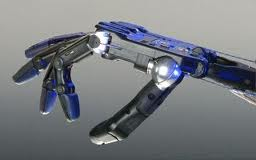The International Federation of Robotics (IFR), an industry trade group, is just out with a report listing five key trends for 2024.
Here are the highlights:
Supply Chain Digest Says...
|
 |
The Chinese Ministry of Industry and Information Technology (MIIT) recently published detailed goals for the country’s ambitions to mass-produce humanoids by 2025.
|
 |
What do you say? |
| Click here to send us your comments |
 |
| |
|
1. Artificial Intelligence (AI) and machine learning
The trend of using Artificial Intelligence in robotics and automation keeps growing, IFR says. The emergence of generative AI opens-up new solutions. Robot manufacturers are developing generative AI-driven interfaces which allow users to program robots more intuitively by using natural language instead of coding. Technicians will no longer need specialized programming skills to select and adjust the robot's actions, IFR says.
Predictive AI is also coming, for example analyzing robot performance data to identify the future state of equipment. Predictive maintenance can save manufacturers machine downtime costs. Machine learning algorithms can also analyze data from multiple robots performing the same process to look for optimization performance, leveraging the fact that in general, the more data a machine learning algorithm is fed the better it performs.
2. Cobots Expanding to new Applications
Human-robot collaboration continues to be a major trend in robotics, IFR says. Rapid advances in sensors, vision technologies and smart grippers allow robots to respond in real-time to changes in their environment and thus work safely alongside human workers, the report says.
It says that collaborative robot applications offer a new tool for human workers, relieving and supporting them. They can assist with tasks that require heavy lifting, repetitive motions, or work in dangerous environments.
The range of collaborative applications offered by robot manufacturers continues to expand.
New competitors are also entering the market with a specific focus on collaborative robots. Mobile manipulators, the combination of collaborative robot arms and mobile robots (AMRs), offer new use cases that could expand the demand for collaborative robots substantially
3. Mobile Manipulators
Mobile manipulators – known as “MoMas” - are automating material handling tasks in industries such as automotive, logistics or aerospace, IFR says.
They combine the mobility of robotic platforms with the dexterity of manipulator arms. This enables them to navigate complex environments and manipulate objects, which is crucial for applications in manufacturing.
Equipped with sensors and cameras, these robots perform inspections and carry out maintenance tasks on machinery and equipment.
(See More Below)
4. Digital Twins
Digital twin technology is increasingly used as a tool to optimize the performance of a physical system by creating a virtual replica, the report says. Since robots are more and more digitally integrated in factories, digital twins can use their real-world operational data to run simulations and predict likely outcomes.
Because the twin exists purely as a computer model, it can be stress-tested and modified with no safety implications while saving costs. All experimentation can be checked before the physical world itself is touched. “Digital twins bridge the gap between digital and physical worlds,” IFR says
5. Humanoid Robots
 IFR says robotics is witnessing significant advancements in humanoids, designed to perform a wide range of tasks in various environments. The human-like design with two arms and two legs allows the robot to be used flexibly in work environments that were actually created for humans. It can therefore be easily integrated e.g. into existing warehouse processes and infrastructure. IFR says robotics is witnessing significant advancements in humanoids, designed to perform a wide range of tasks in various environments. The human-like design with two arms and two legs allows the robot to be used flexibly in work environments that were actually created for humans. It can therefore be easily integrated e.g. into existing warehouse processes and infrastructure.
The Chinese Ministry of Industry and Information Technology (MIIT) recently published detailed goals for the country’s ambitions to mass-produce humanoids by 2025. The MIIT predicts humanoids are likely to become another disruptive technology, similar to computers or smartphones, that could transform the way we produce goods and the way humans live.
The report says the potential impact of humanoids on various sectors makes them an exciting area of development, but their mass market adoption remains a complex challenge. Costs are a key factor and success will depend on their return on investment competing with well-established robot solutions like mobile manipulators, for example.
So there you have five key trends for robotics. SCDigest wishes the report had added some more focus on trends specific to robotics in distribution – these trends seem mostly manufacturing oriented.
Any thoughts on these robot trends? Let us know your thoughts at the Feedback section below.
|